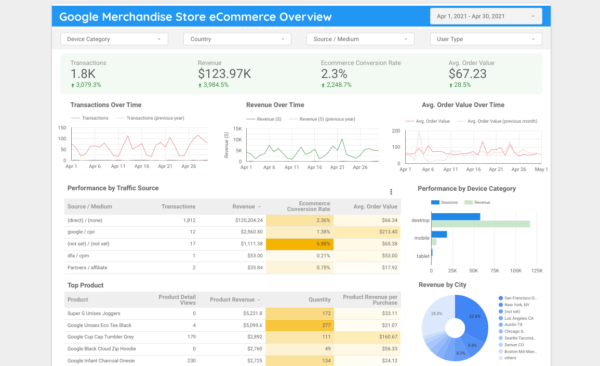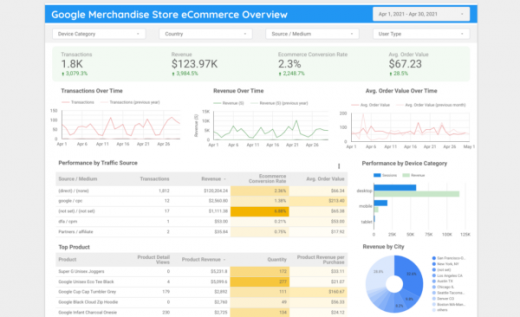Creating a Data Studio Ecommerce Dashboard for Google Analytics Using a Template
If you report to a manager or a team, or if you want a quick overview of your web property performance, whether it’s a website or web app, you understand the importance of understanding and/or communicating performance insight.
Any web analytics tracking tool can offer you tons of data, but it’s up to you to uncover insights. This is where a dashboard can help immensely without having to pour through numerous screens, reports, and data.
Use the Data Studio Dashboard Templates
If you’re using Google Analytics with a Universal Analytics property–the version prior to Google Analytics 4–to track your eCommerce website, there are quite a few eCommerce reports in Google Analytics. If you want to understand eCommerce performance at a higher level or need to report to your team or your managers, there’s a lot to analyze. You can create a Data Studio dashboard to distill the data into something easier to consume.
One of the great things about Data Studio is that Google provides various templates for you to use. Some of the templates give you a preview with live data from Google’s own properties. For example, the eCommerce store template uses data from the official Google merchandise store and the Google Analytics demo account so you can see what the dashboard looks like with actual data.
If you already have a Google Analytics account, you can plug it into your Data Studio eCommerce dashboard and immediately begin configuring the dashboard to your liking.
Creating a Customized eCommerce Dashboard
Your web property is specific to your goals and objectives, so your dashboard will serve your specific needs. While Google does provide dashboard templates, you can improve the interface to make them more user-friendly to fit your purposes.
You can make some improvements to the template so that your audience can quickly understand what they’re viewing. User-friendly enhancements to the layout, the key performance indicators, headings, and even the charts and tables themselves will help viewers consume the information.

These are improvements that make it easier for your audience to read the dashboard, eliminating time spent trying to figure out what the dashboard is conveying.This will give you an interactive dashboard that allows viewers to drill down and explore various segments of performance.
This article was originally published at Growth Learner and has been republished with permission.
Digital & Social Articles on Business 2 Community
(37)


